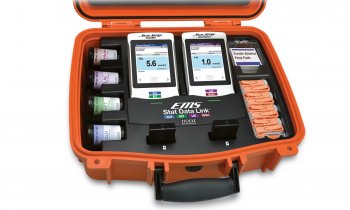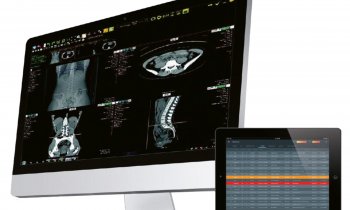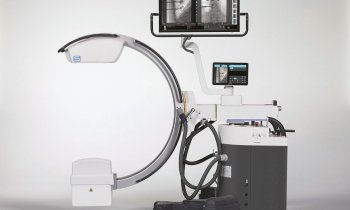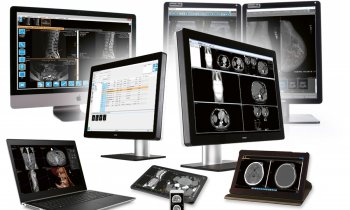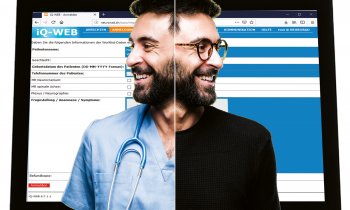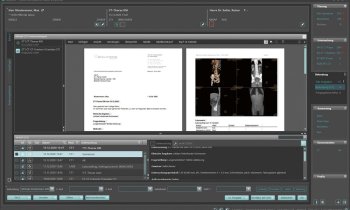Spanish university hospital nets communications
Son Dureta University Hospital, in Palma de Mallorca (Balearics), is Europe's first to use a clinical information system developed from a partnership between Oracle Corporation, Orion Health and Fujitsu Services. Joan Marqués Faner, the hospital's Chief Information Officer, discussed the system with Eduardo de la Sota, our correspondent in Spain.
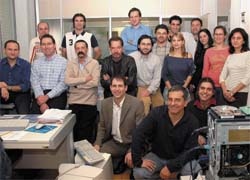
At the 50-year-old Son Dureta University Hospital, IT systems had been introduced gradually and with little planning, resulting in a conglomerate of computer applications and databases across departments to cover their individual needs but not inter-relating, Joan Marqués Faner explained. ‘It was crucial to have a system that could integrate the whole information system, and include modules that had not yet been computerised.’
Whilst many existing systems worked well and users were familiar with them, a system was needed to integrate these, without replacements. ‘However, neither the adult emergency department nor clinical workflow had been computerised. So we decided the emergency department should be a strategic starting point, with two basic features:
1. Our emergency services are provided by physicians assigned to the emergency department, and also, as needed, by specialists from various in-house services. This means that many doctors perform emergency services in addition to their regular duties.
2. Specialists assigned to the emergency department also work in admissions and out-patient services - usually young professionals eager to work with new technologies, which facilitates their implementation.
‘We have now implemented the patient workflow management module, which integrates our triage system (electronic whiteboard), clinical notes, admission reports and orders submission management into three of our core services. The system is available in the emergency department, for adults and children, and we expect to deploy the clinical orders management system from every hospital department to every lab by the end of 2007.’
What were the most difficult tasks?
‘From the beginning, we thought risk management would be important. Those with experience in project management know that problems will arise and we must solve them. However, we didn’t want any surprises. We also knew that integration with third-party components (e.g. labs) could be a problem, considering the variety of providers and technologies involved, and the resistance to change that characterises end users.
‘In terms of the first issue, I could say we underestimated our concerns. Unfortunately, not all the providers of computerised solutions work with integration technology standards such as HL7, so each application has its own background and therefore its own chronology. At the same time, in an effort to minimise the impact of users’ resistance to change, we formed a medical-technological workgroup to ensure all the system functions reflected the needs of users and were not imposed by management or the IT department.’
What role do the three main applications play in the system?
‘Through our clinical web portal, based on the Orion Health Concerto Medical Applications Portal, the physicians can retrieve and review all pertinent data. Through Orion’s web-based orders module they can also electronically process their test requests to clinical, radiology, and pathology labs.
‘To avoid clinical data stored in multiple formats all information is entered into the Oracle Healthcare Transaction Base (HTB) through the Orion Health Rhapsody Integration Engine — a middleware product specifically designed for the health industry. This extracts clinical information from wherever it is located, converts it to a standard format and finally saves it in the HTB. In this way, the engine creates a central repository of standard data that contains a single electronic patient record (EPR).
‘The whiteboard solution, implemented by Orion Health, helps to manage the workflow around patients in the emergency department. The tool displays the updated data of the patients, actually during the service, including the triage decisions, patients’ locations with assigned physicians, orders submitted and, if available, lab results, plus information about time spent by a patient in each segment of the process. With these solutions, the emergency department physician can review on-screen, all the information about patients, including time of admission, waiting period and processes followed by the service, from the moment they entered hospital till a physician was assigned and took over the case. We also provide the information to the patient’s family, to spare them the anguish of not knowing. Actually, the system also includes the preparation of clinical notes and hospitalisation or discharge reports, as well as the management of all orders submitted to pathology, radiology and emergency labs. Hopefully, the remaining labs (immunology, microbiology, haematology, genetics, etc.) will be included soon.’
Did the hospital perform a cost/benefit analysis?
‘The return on investment is not the only factor to keep in mind; you must particularly consider the period required to obtain the benefits. By 2009, we will move to the hospital that is currently under construction. By then, we need to have the EPR module implemented, so we don’t have to add to the traumatic move to a different building all the nuisance of a computer system change.’
Are you planning other new developments?
‘The project is the embryo of our electronic health records module, which, later on, will be linked to the EPR portal for all the communities in the Balearic Islands. We have a long way to go, from the implementation of all consultations and lab orders to the computerisation and integration of nurses’ treatments into the portal. We will not stop at any time in the future.
‘Without the help of our providers - Oracle Corporation, Orion Health and Fujitsu Services – of course this project would have never been possible. We were the first site in Europe to put the Oracle HTB Database in production, a fact that caused some initial integration problems due to lack of experience with this tool. In this sense, the help provided by Fujitsu, leader of the project, especially when dealing with IBsalut, was crucial, to overcome all the difficulties.’
How have these technologies affected the hospital and patients?
Presently, because they are only available in hardcopy, physicians must request them with two days’ notice. Over a period of three years, all physicians will be able to review the EPR of any individual, at any moment when all the data stored in the health history becomes available at the clinical portal.
‘In terms of the community, this project was also extremely important for the hospital, which faces intense pressure to improve its assistance to other hospitals that need quick access to the reports that we create for their patients. Such access can only be obtained through the implementation of an electronic clinical database, which can be accessed from any hospital or healthcare centre. As a matter of fact, the project developed at the Son Dureta University Hospital has been a launching platform for the health-records database of all the communities in the Balearic Islands. Based on the success of our project, they have adopted the same technology. This means that, from any hospital on the islands, and through a single clinical portal, you can review any individual’s digital EPR, including discharge reports, lab results, etc.
26.06.2007






